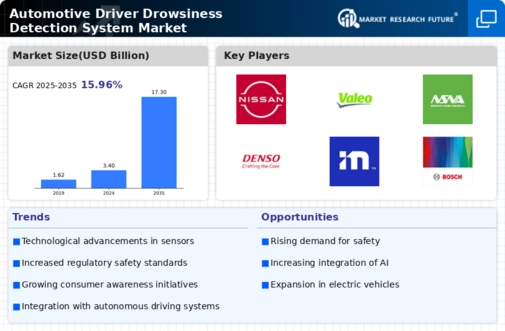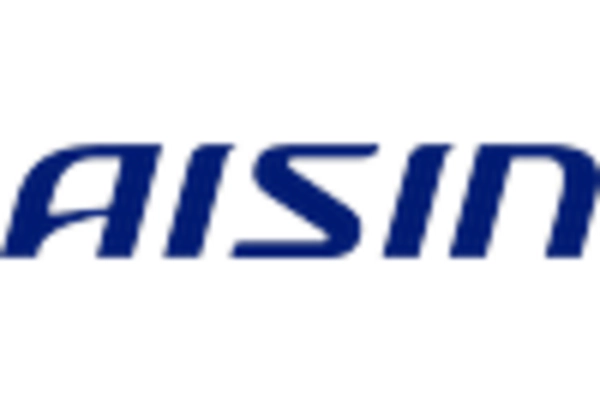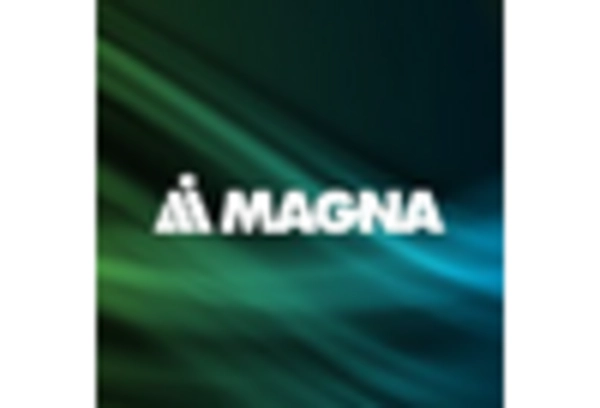The Automotive Driver Drowsiness Detection System Market is currently characterized by a dynamic competitive landscape, driven by increasing safety regulations and a growing emphasis on advanced driver-assistance systems (ADAS). Key players such as Bosch (Germany), Continental (Germany), and Denso (Japan) are at the forefront, leveraging innovation and strategic partnerships to enhance their market positions. Bosch (Germany) focuses on integrating artificial intelligence into its drowsiness detection systems, aiming to improve accuracy and responsiveness. Meanwhile, Continental (Germany) emphasizes regional expansion, particularly in Asia-Pacific, to tap into the burgeoning demand for automotive safety technologies. Denso (Japan) is also investing heavily in research and development to refine its sensor technologies, which collectively shapes a competitive environment that is increasingly reliant on technological advancement and strategic collaborations.
The market structure appears moderately fragmented, with several players vying for dominance. Key business tactics include localizing manufacturing to reduce costs and optimize supply chains, which is particularly relevant in the context of rising material costs and global supply chain disruptions. The collective influence of these major players fosters a competitive atmosphere where innovation and operational efficiency are paramount, allowing them to respond swiftly to market demands and regulatory changes.
In August 2025, Bosch (Germany) announced the launch of its latest drowsiness detection system, which utilizes machine learning algorithms to analyze driver behavior in real-time. This strategic move is significant as it not only enhances the safety features of vehicles but also positions Bosch as a leader in the integration of AI within automotive safety systems. The emphasis on real-time data processing could potentially set a new standard in the industry, compelling competitors to accelerate their own technological advancements.
In September 2025, Continental (Germany) entered into a partnership with a leading tech firm to develop a cloud-based platform for vehicle safety systems, including drowsiness detection. This collaboration is indicative of a broader trend towards digital transformation in the automotive sector, where data analytics and cloud computing are becoming integral to enhancing vehicle safety. By leveraging cloud technology, Continental aims to provide more comprehensive safety solutions that can adapt to various driving conditions, thereby enhancing user experience and safety.
In July 2025, Denso (Japan) unveiled a new sensor technology designed to improve the accuracy of drowsiness detection systems. This innovation is particularly noteworthy as it reflects Denso's commitment to advancing automotive safety through cutting-edge technology. The introduction of this sensor could potentially lead to a competitive edge in the market, as it addresses the critical need for reliable and precise driver monitoring systems.
As of October 2025, the competitive trends in the Automotive Driver Drowsiness Detection System Market are increasingly defined by digitalization, sustainability, and the integration of artificial intelligence. Strategic alliances are shaping the landscape, enabling companies to pool resources and expertise to drive innovation. Looking ahead, it is likely that competitive differentiation will evolve, shifting from traditional price-based competition to a focus on technological innovation, enhanced user experience, and supply chain reliability. This transition underscores the importance of agility and responsiveness in a rapidly changing market.


















Leave a Comment